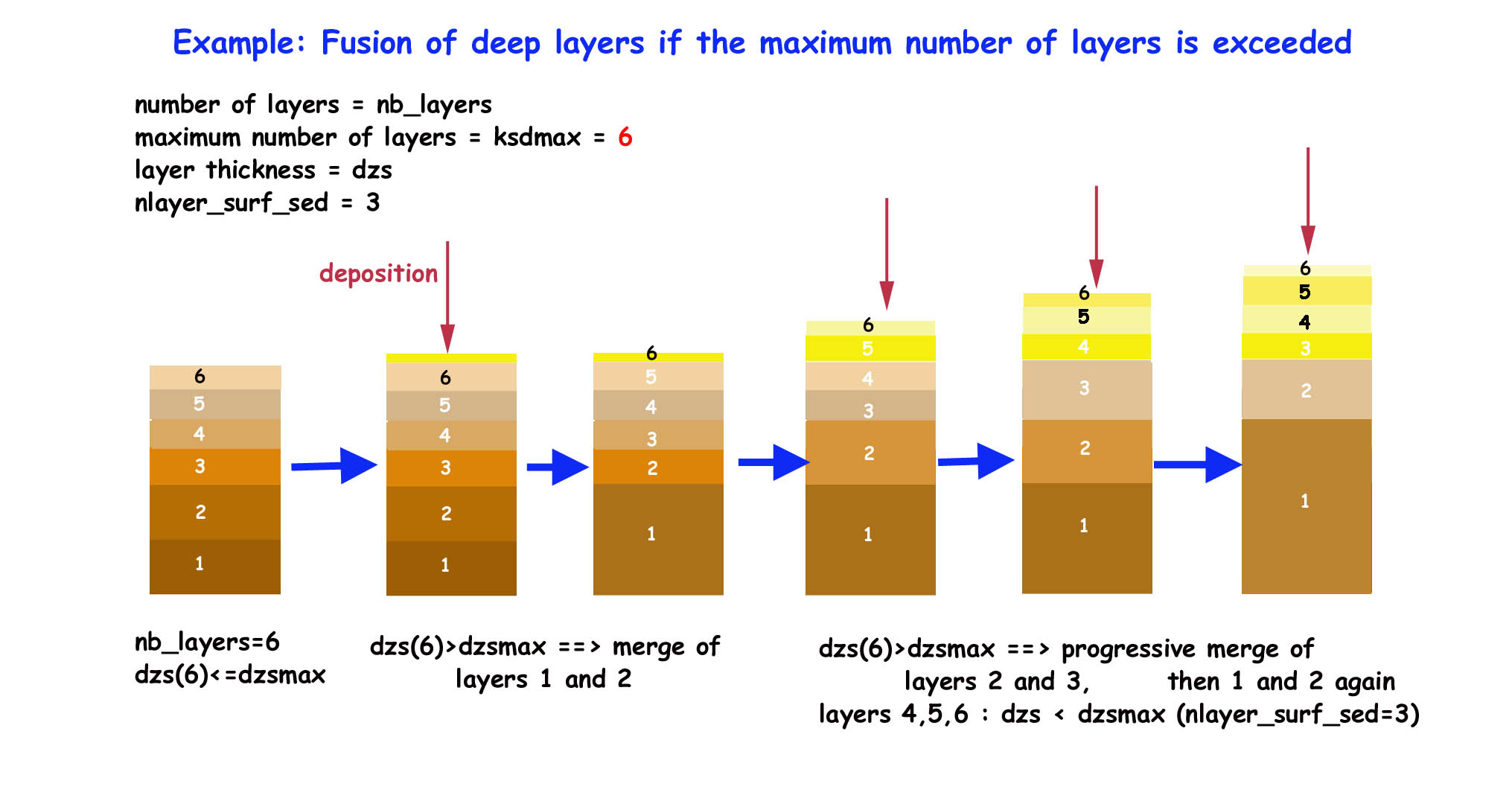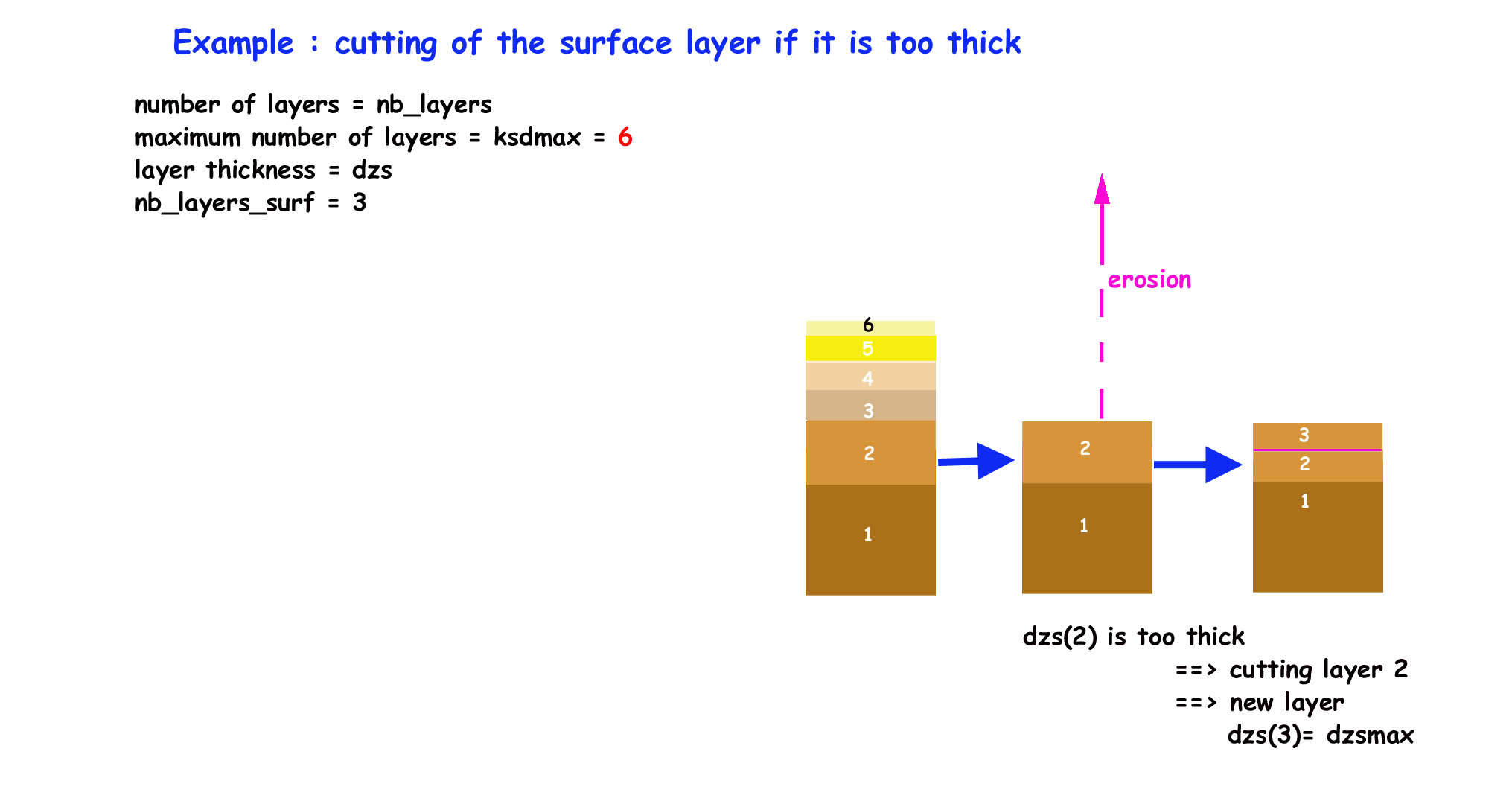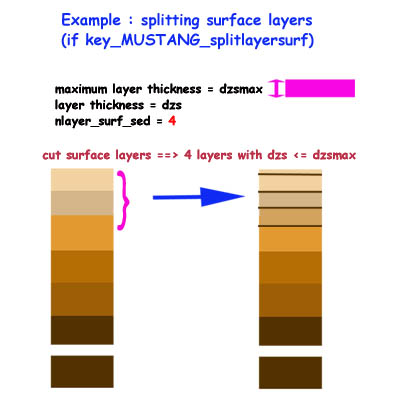Management of sediment layers¶
the sediment layers in each mesh (i,j) of the grid are defined by their thickness ( dzs in meters) and the concentrations of each simulated variable.
The number of layers in each mesh varies as a function of time, depending on the deposition and erosion episodes and as the sediment consolidates. The total number of layers is limited to ksdmax (parameter given by the user).
the thickness of a layer varies between a minimum value (dzsmin) and a maximum value (dzsmax).
- if the thickness of a layer decreases (by erosion or compaction) below dzsmin, it is merged with the layer below.
- If the thickness of a layer increases (by deposit) above dzsmax+5.dzsmin, a new layer is created.
- the value of dzsmin is
- either constant and defined by the user at initialization (in version V1)(namelist namlayer in paraMUSTANGV1.txt)
- either calculated according to the composition of the sediment (in version V2). The function “dzsminvar” evaluates dzsmin from the following formulation :
\(dzsminvar=(1-coeff_{dzsmin})*dzsminuni +coeff_{dzsmin}*SUM( frac_{sed}(1:nvpc)*diam_{sed}(1:nvpc) )\)
with frac_sed = fraction of each type of sedimentand diam_sed = diameter of each type of sedimentand with the parameters given by the user at initialization (namelist namlayer in paraMUSTANGVn.txt):coeff_dzsmin =0 si dzsmin constant (l_dzsminuni=.TRUE. in paraMUSTANGVn.txt)or coeff_dzsmin =1 if dzsmin varies (l_dzsminuni=.FALSE. in paraMUSTANGVn.txt)dzsminuni given by user
the value of dzsmax may vary in space (i,j). Indeed, the discretization of the sediment column can be more or less coarse depending on the dynamic conditions of the area. If the quantities of material involved in the deposition/erosion fluxes are very small, it may be necessary to decrease dzsmax, while on the contrary, if there is a lot of deposition, we may want to increase dzsmax in order to limit the maximum number of layers.
- To limit the maximum number of sediment layers if there is a strong deposit in certain meshes, a “layer fusion” mechanism has been implemented with two new parameters (given by the user at initialization (namelist namlayer):
dzsmax_bottom : maximum layer thickness in deep layers at the beginning. This value can increase as the height of the sediment increases and the maximum number of layers is exceeded.
nlayer_surf_sed : number of surface layers that cannot be merged
The layers are gradually merged two by two from the bottom (see figure below)

When, after an erosion episode, a bottom layer thicker than dzsmax becomes the surface layer, it is cut in order to have always one thin layer at sediment surface.

It is also possible to always maintain a fixed number (nlayer_surf_sed) of surface layers with a given thickness (dzsmax). We then use the key CPP (key_MUSTANG_splitlayersurf)

